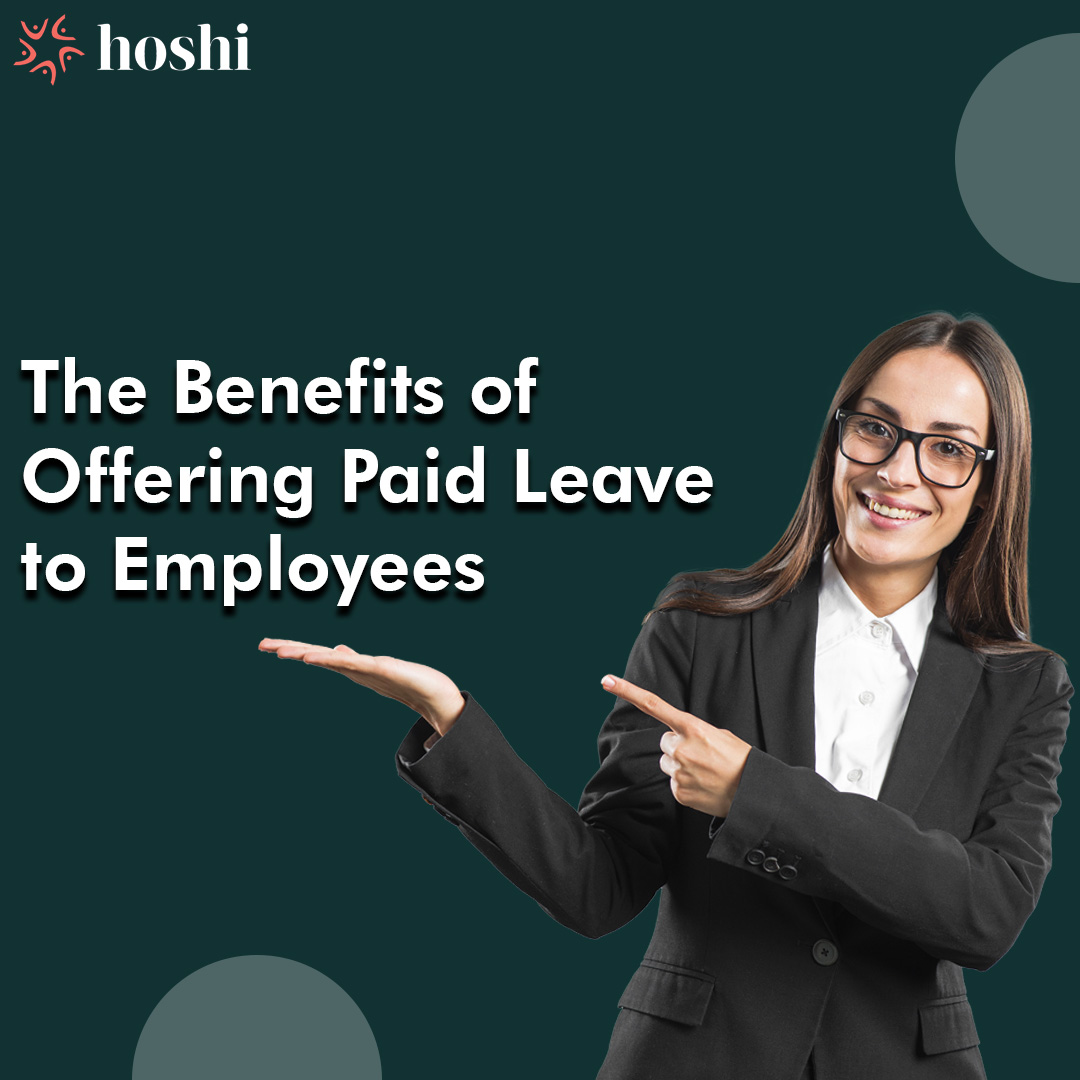How to Write a Leave Application and the Benefits of Offering Paid Leave to Employees
What is a leave application? Why is it important?

Leave application is the only formal manner to stay away from duties or the place you are accountable for the day. It’s an fundamental aspect and most structured process for employee to request time off work for various reasons whether it’s for illness, vacations, personal reasons or any other valid grounds.
Leave applications play a crucial role in maintaining a harmonious work environment. They provide a clear framework for employees to request time off, ensuring that their absence doesn't disrupt the workflow or hinder project timelines. Furthermore, leave applications allow employers to plan and allocate resources, reducing the risk of project delays and work bottlenecks.
Here an Organization should consider few aspects for Employees like Sympathizing & Empathizing, Planning, Awareness, Data and Ownership in case of absence of any employee. Also, employees should apply leave with thoughtfulness, communicate as per the hierarchy& should consider importance of leave and avail if it’s needed or necessary and just not because you are entitled for or you are eligible for it.
"Leave types" generally refer to different categories or types of time off those employees can take from work. The specific leave types can vary depending on company policies, local labour laws, and the organization's culture. Here are some common types of leave that employees might be entitled to:
The different types of leave and their eligibility criteria:
- Paid Leave: This includes vacation days, holidays, and personal days that an employee is entitled to as part of their compensation package.
- Sick Leave: When an employee is unwell or needs medical attention, they can request sick leave to recover without affecting their income.
- Maternity/Paternity Leave: Parents-to-be can apply for maternity or paternity leave to care for their newborn and adjust to the changes in their family life.
- Bereavement Leave: In times of loss, such as the death of a close family member, employees can take bereavement leave to grieve and handle necessary arrangements.
- Emergency Leave: Unforeseen situations like accidents or sudden family emergencies may require an employee to take immediate time off.
- Unpaid Leave / Sabbatical Leave: An employee can request a sabbatical for education advancement, family/health crisis, or to take a career break. A sabbatical is a long-term break.
- Vacation Leave: Also known as paid time off (PTO), vacation leave allows employees to take time off from work for leisure or personal reasons. This could include holidays, travel, rest, or any other purpose they deem necessary.
- Military Leave: Employees who are members of the military reserve or National Guard may be granted leave for military training or deployments.
- Medical Leave: Apart from sick leave, some companies offer a separate medical leave category for more extended medical absences or serious health conditions.
- Study Leave: This type of leave allows employees to take time off work to pursue educational or training opportunities that can benefit their job performance.
- Menstrual Leave: Spain has just passed a Law allowing females to apply for a paid leave especially during painful periods. Japan to Korea allows one to three days in a year. In India only Bihar and Kerala have adopted menstrual leave policies & 10 days of leave are allowed in year.
It's important to note that the availability and specifics of these leave types can vary widely based on factors such as the country, state, or province where the employee is working, as well as the company's policies and employment agreements. Always refer to your organization's official documentation or HR department for accurate information on leave types and entitlements.
How to write a good leave application: The key elements to include, and some tips on how to get your application approved.

- Submit in Advance: Whenever possible, submit leave applications well in advance to allow your employer and colleagues sufficient time to adjust their plans.
- Use Proper Channels: Follow your organization's prescribed method for submitting leave applications, whether it's through an HR portal, email, or a dedicated software.
- Provide Adequate Information: Clearly state the dates of your intended leave, the type of leave you're applying for, and any relevant details your employer should know.
- Plan for Workload: If your absence will affect your team's work, proactively delegate tasks or provide guidance to a colleague who will be covering for you.
- Be Professional: Maintain a professional tone in your leave application, and if possible, explain the reason for your leave without divulging unnecessary personal details.
- Follow Up: If your leave application requires approval and you don't receive a response within a reasonable time frame, follow up with your supervisor or HR department
A leave application is a formal request to higher authorities for leave for the specified dates.
Let us concentrate on some aspects that should be covered when typing.
- Salutation
- Greetings
- Date Range
- Subject of Application
- Signature
Technology's Impact on Leave Applications
With advancements in technology, the process of submitting and managing leave applications has become more streamlined. Many organizations use dedicated HR software like Hoshi HRMS that allows employees to apply for leave online. This reduces paperwork, enables efficient tracking, and facilitates quicker communication between employees and management. The leave policies, its rules, workflows for approvals get absorbed in the system as per the Company norms or policies. Hoshi HRMS has a Leave dashboard for employees and also Calendar for HR’s & reporting managers so as to balance workflow as per mapped projects to the employees.
Additionally, some companies have adopted automated approval systems, where predefined criteria determine whether a leave request is approved or not. This expedites the process and ensures consistency in decision-making.
The benefits of offering paid leave to employees: How it can improve employee satisfaction, morale, and productivity.

- Employee Well-being and Morale: Paid leave demonstrates that you care about your employees' well-being and work-life balance. When employees feel supported and valued, their job satisfaction and morale increase, leading to higher motivation and productivity.
- Retention and Recruitment: Providing paid leave makes your company more attractive to potential employees. In a competitive job market, offering comprehensive leave benefits can set you apart and help attract and retain top talent.
- Reduced Burnout and Absenteeism: Burnout and excessive absenteeism can lead to decreased productivity and increased turnover. Paid leave allows employees to rest and recharge, reducing the likelihood of burnout and the need for unplanned absences.
- Higher Productivity: Employees who have the opportunity to take paid leave are more likely to return to work refreshed and energized. This can lead to increased focus, creativity, and overall productivity when they're back on the job.
- Employee Engagement: Engaged employees are more committed to their work and the success of the company. Offering paid leave as part of a comprehensive benefits package contributes to employee engagement and a positive work culture.
- Health and Well-being: Paid sick leave allows employees to take time off when they're unwell without worrying about lost wages. This encourages them to prioritize their health and well-being, which can lead to quicker recovery times and a healthier workforce overall.
- Compliance with Labor Laws: Depending on your jurisdiction, there might be legal requirements for providing certain types of paid leave, such as sick leave or maternity/paternity leave. Complying with these laws helps you avoid legal issues and penalties.
- Cost Savings: While providing paid leave incurs a cost, it can lead to cost savings in the long run. Employees who take paid leave are more likely to return to work sooner and with better mental and physical health, reducing the potential for extended absences or disability claims.
- Positive Public Image: Companies that prioritize employee well-being and work-life balance tend to have a more positive public image. This can attract customers and partners who appreciate socially responsible business practices.
- Team Collaboration: Paid leave can encourage cross-training and collaboration within teams. When one team member is on leave, others have the opportunity to step in and learn new skills, enhancing the team's overall capabilities.
- Long-Term Planning: Providing paid leave allows employees to plan for their personal and family needs. This helps them feel more secure and stable in their employment, which can positively impact their commitment to the company.
Conclusion
Leave applications are an essential aspect of maintaining balance in the workplace. They provide employees with the opportunity to rest, recover, and attend to personal matters while enabling employers to manage workloads effectively. By adhering to best practices and utilizing Hoshi HRMS , the leave application process can become smoother and more efficient, benefitting both employees and organizations alike.
Overall, offering paid leave aligns with modern workforce expectations and values, promoting a healthier, more engaged, and more productive work environment. It can contribute to the success and sustainability of your business in the long run.




